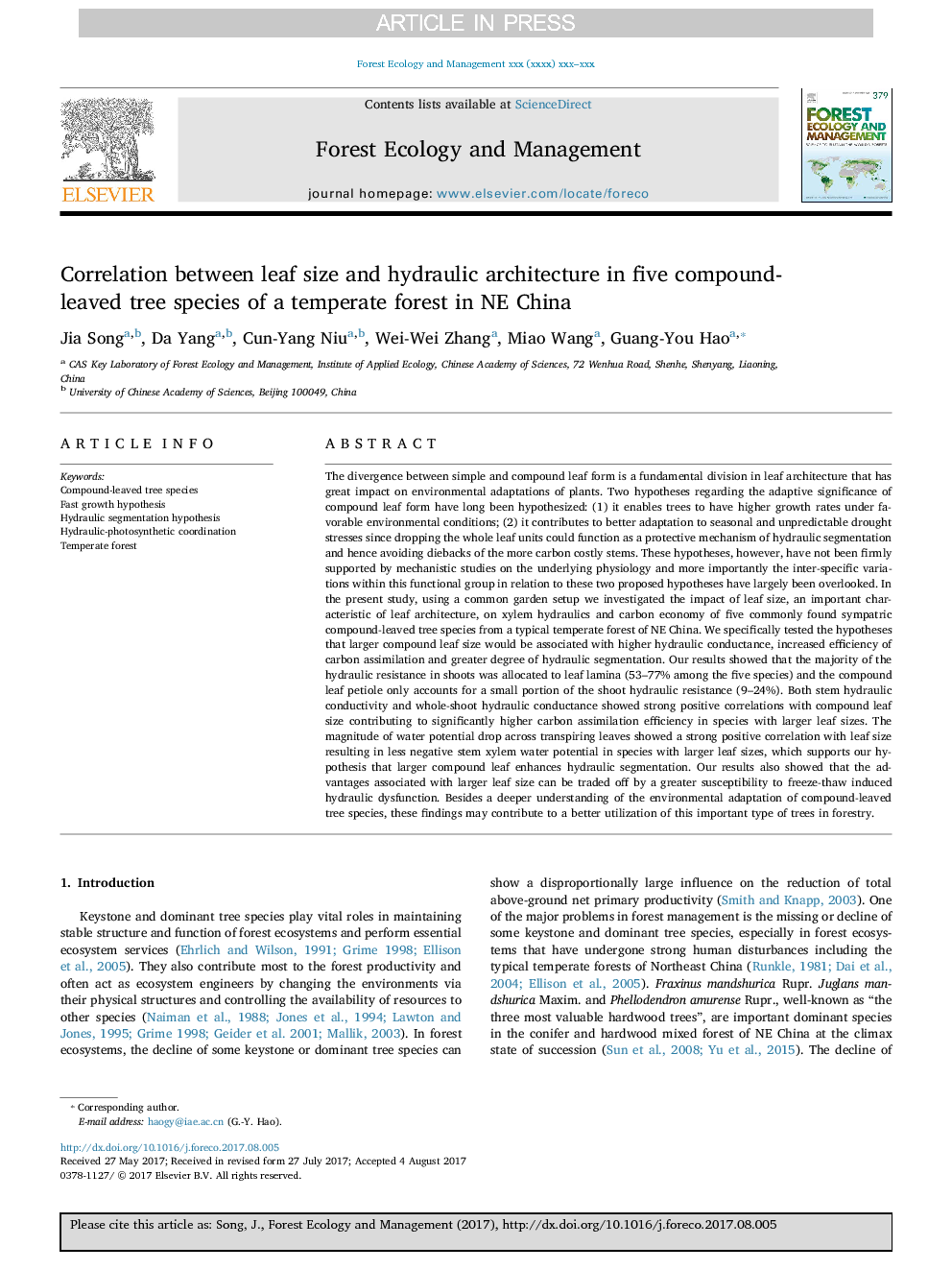ترجمه فارسی عنوان مقاله
همبستگی بین اندازه برگ و معماری هیدرولیکی در پنج گونه درخت جنگلی مرکب جنگلی معتدل در شمال غربی چین
عنوان انگلیسی
Correlation between leaf size and hydraulic architecture in five compound-leaved tree species of a temperate forest in NE China
| کد مقاله | سال انتشار | تعداد صفحات مقاله انگلیسی |
|---|---|---|
| 154962 | 2018 | 10 صفحه PDF |
منبع

Publisher : Elsevier - Science Direct (الزویر - ساینس دایرکت)
Journal : Forest Ecology and Management, Volume 418, 1 June 2018, Pages 63-72
ترجمه کلمات کلیدی
گونه های درخت انجیر، فرضیه رشد سریع، فرضیه تقسیم هیدرولیکی، هماهنگ سازی هیدروژنی-فتوسنتزی، جنگل معتدل،
کلمات کلیدی انگلیسی
Compound-leaved tree species; Fast growth hypothesis; Hydraulic segmentation hypothesis; Hydraulic-photosynthetic coordination; Temperate forest;

